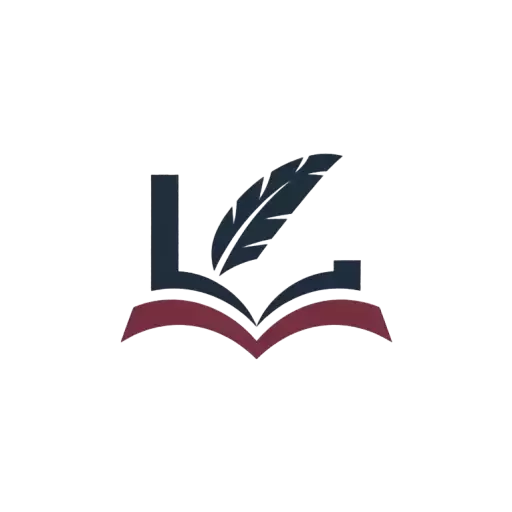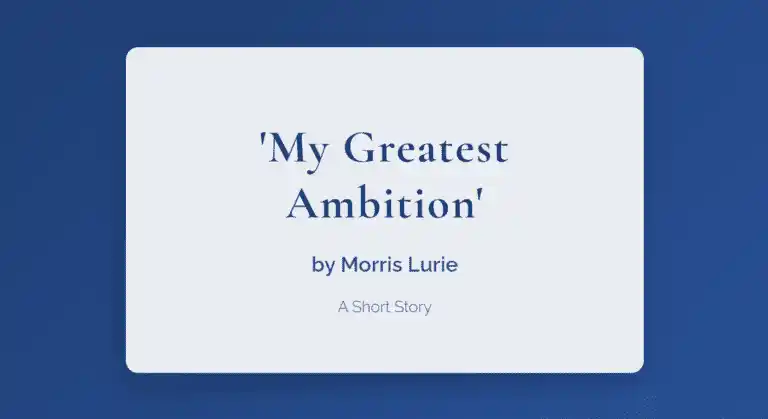Morris Lurie, an Australian author known for his wit and humor, penned “My Greatest Ambition” as a short story that delves into the realm of childhood aspirations and the often comical disconnect between youthful dreams and adult realities. Published in 1984, this piece stands out in Lurie’s oeuvre as a charming exploration of adolescent ambition, family dynamics, and the journey of self-discovery.
Table of Contents
The story, while brief, touches on themes of creativity, parental expectations, and the bittersweet nature of growing up. Through its lighthearted narrative, Lurie crafts a tale that resonates with readers of all ages, offering a nostalgic glimpse into the innocent yet determined mind of a young artist-to-be. “My Greatest Ambition” serves as a poignant reminder of the power of childhood dreams and the unexpected paths they may lead us down.
Brief Summary
“My Greatest Ambition” follows the story of a young boy whose burning desire is to become a comic book artist. The narrative unfolds as the protagonist pursues his dream with unwavering enthusiasm, despite the skepticism and lack of understanding from his parents. The boy’s journey takes an unexpected turn when he manages to secure a meeting with an actual comic book editor.
This encounter, filled with both excitement and trepidation, becomes the centerpiece of the story. As the plot progresses, readers are taken through the highs and lows of the boy’s artistic endeavor, culminating in a conclusion that blends humor with a touch of life’s harsh realities.
The Power of Childhood Ambition
At the heart of “My Greatest Ambition” lies the theme of childhood dreams and their profound impact on young minds. Lurie masterfully captures the intensity and single-mindedness with which children pursue their passions. The protagonist’s fervent desire to become a comic book artist is palpable throughout the story:
“I wanted to draw comics. I wanted to draw comics more than anything else in the world.”
This simple yet powerful declaration sets the tone for the entire narrative. The boy’s ambition is not merely a passing fancy but a driving force that shapes his actions and worldview. Lurie uses this theme to explore the boundless optimism of youth and the belief that anything is possible with enough determination.
Family Dynamics and Generational Disconnect
One of the most compelling aspects of the story is the portrayal of family dynamics, particularly the gap between the protagonist’s aspirations and his parents’ understanding. Lurie deftly illustrates the often-comical misunderstandings that can arise between generations:
“My mother said I should be a doctor. My father said I should be a lawyer. I said I wanted to draw comics.”
This succinct exchange encapsulates the tension between parental expectations and a child’s individual dreams. The parents’ well-intentioned but conventional career suggestions stand in stark contrast to the boy’s artistic ambitions, highlighting the struggle many young people face in pursuing unconventional paths.
The Journey of Self-Discovery
As the story progresses, Lurie takes readers on a journey of self-discovery alongside the young protagonist. The boy’s pursuit of his ambition leads him to experiences and realizations that go beyond the realm of comic book artistry. The pivotal meeting with the comic book editor serves as a coming-of-age moment:
“I was ushered into the presence of the editor himself. He was eating a sandwich and reading a comic.”
This encounter, both thrilling and intimidating, marks a significant step in the boy’s growth. It represents the collision of fantasy and reality, forcing the protagonist to confront the practical aspects of his dream and, by extension, the adult world.
Humor as a Narrative Tool
Lurie’s deft use of humor is a standout feature of “My Greatest Ambition.” The author employs a light, often self-deprecating tone that adds layers of enjoyment to the reading experience. The humor serves multiple purposes: it makes the story more engaging, softens the blow of life’s harsher lessons, and provides a lens through which to view the sometimes absurd nature of human ambitions and interactions.
For instance, the boy’s description of his artistic process is both endearing and amusing:
“I drew at night, by torchlight, under the bedclothes, in case my mother came in and caught me at it.”
This image of clandestine creativity not only elicits a chuckle but also underscores the passion and determination driving the young artist.
Literary Techniques in “My Greatest Ambition”
Lurie employs several literary techniques to enhance the storytelling and thematic depth of “My Greatest Ambition”:
- First-person narrative: The use of a first-person perspective allows readers to intimately connect with the protagonist’s thoughts and feelings, experiencing his journey firsthand.
- Irony: The story is rife with ironic moments, particularly in the contrast between the boy’s lofty ambitions and the mundane realities he encounters.
- Pacing: Lurie masterfully controls the story’s pacing, building tension towards the climactic meeting with the editor and then skillfully deflating it for comic effect.
- Dialogue: The sparse but poignant dialogue effectively reveals character dynamics and generational differences.
These techniques work in concert to create a rich, multilayered narrative that belies the story’s brief length.
Critical Reception and Impact
“My Greatest Ambition” has been widely praised for its humor, relatability, and insightful portrayal of childhood dreams. Critics have noted Lurie’s ability to capture the essence of youthful aspiration while gently poking fun at the naivety that often accompanies it. The story’s enduring appeal lies in its universal themes and the bittersweet recognition it evokes in readers who have experienced the evolution of their own childhood ambitions.
The piece has found a place in numerous anthologies and is often used in educational settings to discuss narrative techniques and themes of growing up. Its impact extends beyond literary circles, resonating with anyone who has ever harbored a seemingly impossible dream or faced the challenge of bridging the gap between youthful aspirations and adult realities.
Conclusion
Morris Lurie’s “My Greatest Ambition” stands as a testament to the power of short-form storytelling. In just a few pages, Lurie manages to craft a narrative that is at once humorous, poignant, and profoundly relatable. The story’s exploration of childhood dreams, family dynamics, and the journey of self-discovery strikes a chord with readers of all ages.
Through the young protagonist’s pursuit of his comic book artist ambitions, Lurie invites us to reflect on our own youthful aspirations and the paths they’ve led us down. My Greatest Ambition serves as a gentle reminder of the importance of nurturing creativity and the value of maintaining a sense of wonder and determination in the face of life’s realities.
Ultimately, “My Greatest Ambition” leaves us with a bittersweet yet uplifting message about the nature of dreams and the unexpected ways they shape our lives. It encourages readers to look back on their own greatest ambitions with a mixture of nostalgia, humor, and appreciation for the journey they’ve inspired.



1 Comment
Pingback: Out of the Dust by Karen Hesse | Themes & Characters - LitGram by MukeshRishit